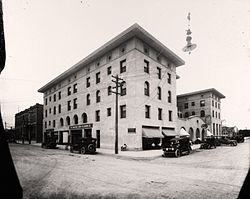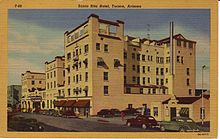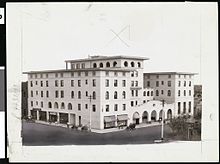
Tucson is a city in and the county seat of Pima County, Arizona, United States, and is home to the University of Arizona. It is the second-largest city in Arizona behind Phoenix, with a population of 542,629 in the 2020 United States census, while the population of the entire Tucson metropolitan statistical area (MSA) is 1,043,433. The Tucson MSA forms part of the larger Tucson-Nogales combined statistical area. Both Tucson and Phoenix anchor the Arizona Sun Corridor. The city is 108 miles (174 km) southeast of Phoenix and 60 mi (100 km) north of the United States–Mexico border.

The Santa Catalina Mountains, commonly referred to as the Catalina Mountains or the Catalinas, are north and northeast of Tucson in Arizona, United States, on Tucson's north perimeter. The mountain range is the most prominent in the Tucson area, with the highest average elevation. The highest point in the Catalinas is Mount Lemmon at an elevation of 9,157 feet (2,791 m) above sea level and receives 18 inches (460 mm) of precipitation annually.

The Santa Cruz River is a left tributary of the Gila River in Southern Arizona and northern Sonora, Mexico. It is approximately 184 miles (296 km) long.

Amphitheater Public Schools, also known as Amphi or District 10, is the third largest public school district in Tucson, Arizona, in terms of enrollment, with about 13,500 students and a staff of about 2000 employees Amphi was established on July 3, 1893. With its headquarters in Flowing Wells, presently serves segments of North Tucson, Casas Adobes, Catalina Foothills, and the communities of Oro Valley, eastern Tortolita, and Catalina northwest of the city.

Trost & Trost Architects & Engineers, often known as Trost & Trost, was an architectural firm based in El Paso, Texas. The firm's chief designer was Henry Charles Trost, who was born in Toledo, Ohio, in 1860. Trost moved from Chicago to Tucson, Arizona in 1899 and to El Paso in 1903. He partnered with Robert Rust to form Trost & Rust. Rust died in 1905 and later that year Trost formed the firm of Trost & Trost with his twin brother Gustavus Adolphus Trost, also an architect, who had joined the firm as a structural engineer. Between 1903 and Henry Trost's death on September 19, 1933, the firm designed hundreds of buildings in the El Paso area and in other Southwestern cities, including Albuquerque, Phoenix, Tucson, and San Angelo.

The Hotel Congress is a federally recognized historic building located in downtown Tucson, Arizona. It was built in 1918 and designed by the Los Angeles architectural firm William and Alexander Curlett as part of an expansion of Congress Street and in conjunction with the theatrical venue Rialto Theatre, which sits north of Congress Street. The rear of the building faces the historic Amtrak Southern Pacific train station, built by Southern Pacific in 1907. In addition to being a hotel, the Hotel Congress building also houses a restaurant, bar and music venue. The name "The Congress Hotel" was chosen through a naming competition organized by the Arizona Daily Star newspaper in 1918. The winning suggestion was announced on April 30, 1918, and it was submitted by Dorit Dinkel, who won $15 worth of baby bonds for having their name chosen. The Hotel Congress and its owners since 1985, Richard Oseran and Shana Oseran, have been a key cultural institution and boosters in the early 21st-century redevelopment of Downtown Tucson.

Kentucky Camp is a ghost town and former mining camp along the Arizona Trail in Pima County, Arizona, United States, near the community of Sonoita. The Kentucky Camp Historic District is listed on the National Register of Historic Places and has been since 1995. As it is located within Coronado National Forest, the United States Forest Service is responsible for the upkeep of the remaining buildings within the Kentucky Camp Historic District.

The Pueblo Revival style or Santa Fe style is a regional architectural style of the Southwestern United States, which draws its inspiration from Santa Fe de Nuevo México's traditional Pueblo architecture, the Spanish missions, and Territorial Style. The style developed at the beginning of the 20th century and reached its greatest popularity in the 1920s and 1930s, though it is still commonly used for new buildings. Pueblo style architecture is most prevalent in the state of New Mexico; it is often blended with Territorial Revival architecture.

The Pima County Public Library (PCPL) system serves Pima County, Arizona, with a main library and 26 branch libraries as well as a bookmobile service. The system has its headquarters in Tucson with a service area including the city and the surrounding communities of Arivaca, Green Valley, Sahuarita, South Tucson, Ajo, Vail, Marana, Casas Adobes, and Catalina. The town of Oro Valley's library joined the Pima County Public Library system in July 2012.
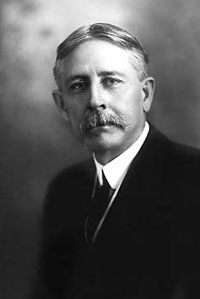
Epes Randolph was an American civil engineer and businessman who constructed railroads in America's South, Ohio, Arizona, California, and Mexico. From 1905 to 1907 he led the successful effort to restore the Colorado River to its banks after irrigation canal construction and flooding diverted it from the Gulf of California and into California's Imperial Valley, creating the Salton Sea. Randolph spent his later life in Tucson, Arizona, where he served as president of several railroads, as vice-president of Tucson's Consolidated National Bank, and as chancellor of the University of Arizona Board of Regents.
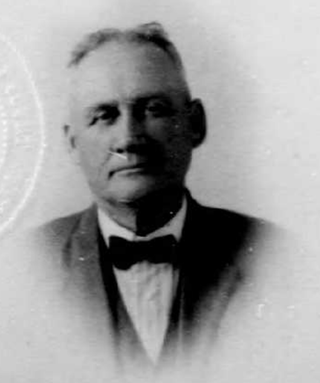
James Miller Creighton was an American architect who practiced in Phoenix, Arizona from the 1880s to the 1920s. He is considered to be one of Arizona's first architects.

Levi Howell Manning served as Mayor of Tucson, Arizona from 1905 to 1907.
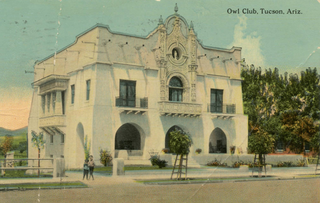
The Owls club is an historic building in the El Presidio neighborhood of Tucson, Arizona, originally built in 1902 as the second building for the Owls, a bachelor's club in that city. As of 2020, it was occupied by the Center for Biological Diversity, which acquired the property in 2014, after it had passed through numerous other owners.
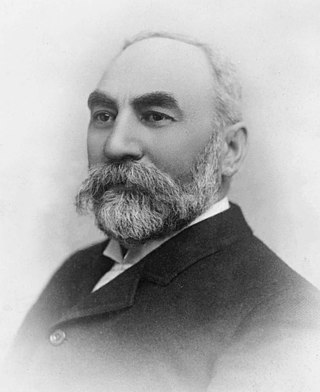
Louis Zeckendorf was a Jewish German-born American merchant. He was primarily involved in the mining industry in New Mexico and Arizona, as well as shipping and supplies in support of that industry.

Lawrence Oscar Cowan was an American judge, state legislator, city official, businessman, and miner in the Arizona Territory and state in the late 19th and early 20th centuries.

George James Roskruge was the surveyor general of Arizona Territory from 1896 to 1897. Born in England, he emigrated to the United States in his mid-20s and became a naturalized citizen in 1876. He spent most of his life in Tucson, Arizona, where he held many prominent positions and is considered a city pioneer. He was an expert rifleman and is called the "father of Masonry" in Arizona.
Ray Ferguson was an American physician and politician from Arizona who served in the Arizona State Senate from 1917 through 1918, during the 3rd Arizona State Legislature. In addition to his short political career, Ferguson was heavily involved in the mining industry in Arizona and Mexico. Twice he served as the superintendent of the Territorial and State Insane Asylum in Phoenix.
